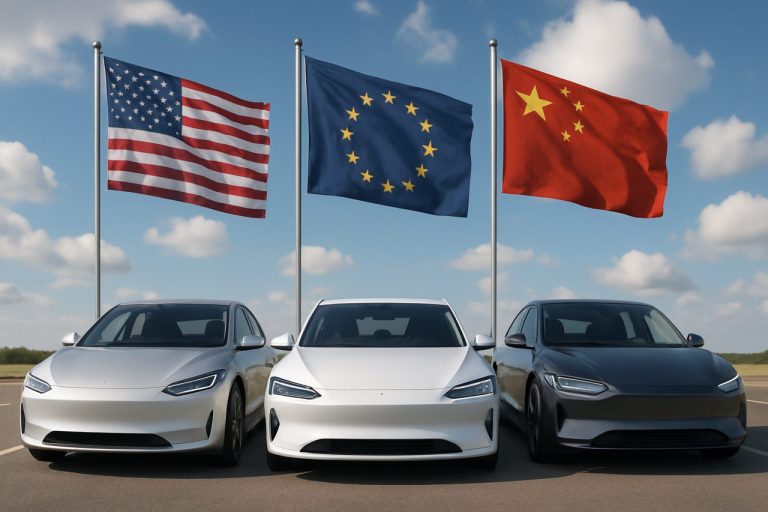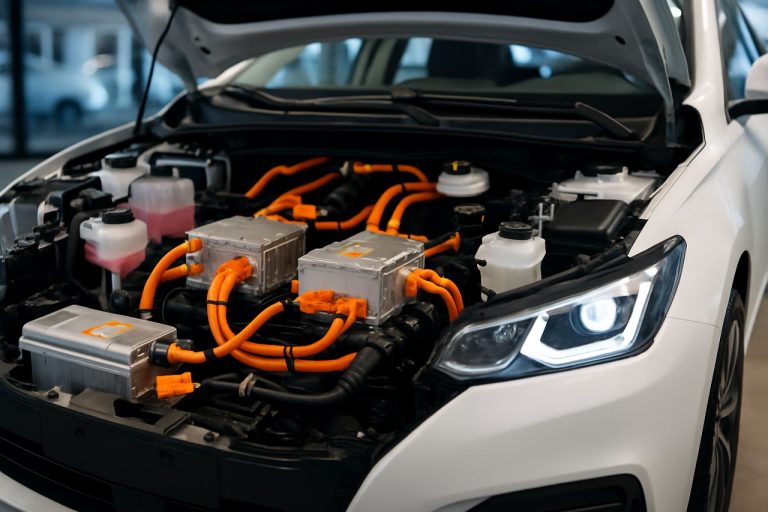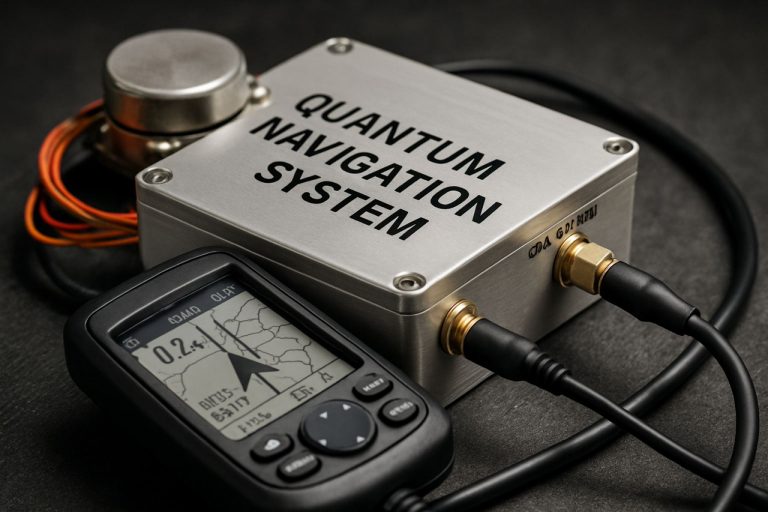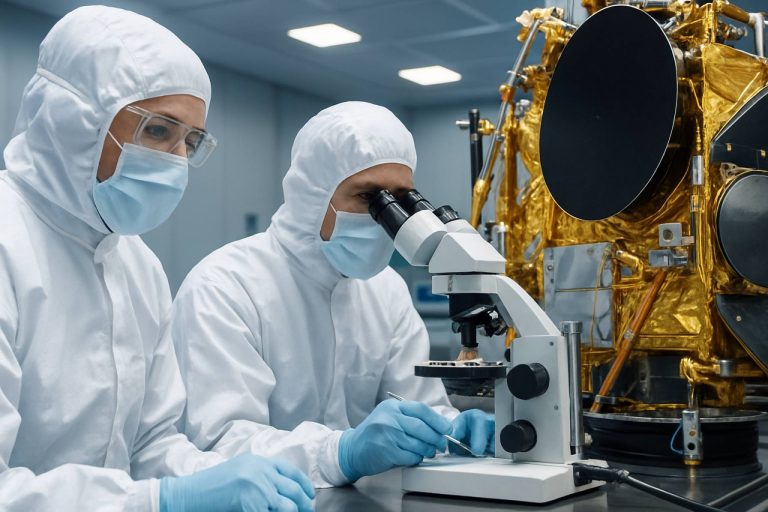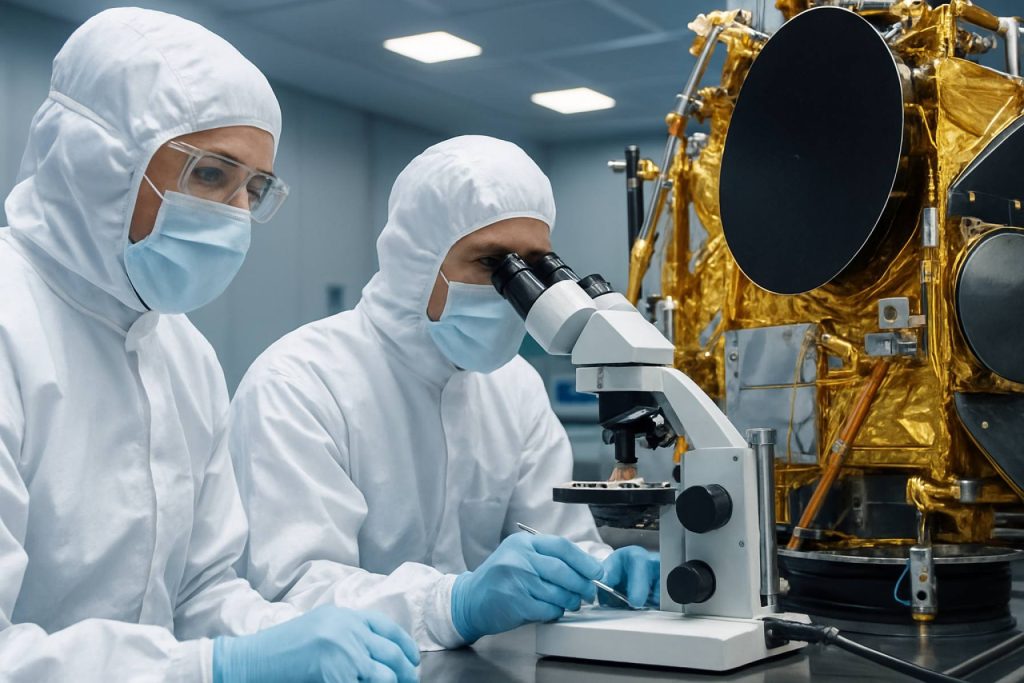
Safeguarding the Cosmos: How Planetary Protection & Contamination Control Technologies Will Transform Space Missions in 2025 and Beyond. Explore the Market Forces, Breakthroughs, and Strategic Imperatives Shaping the Next Era of Interplanetary Exploration.
- Executive Summary: 2025 Market Outlook & Key Drivers
- Global Market Size, Growth Forecasts & CAGR (2025–2030)
- Regulatory Landscape: NASA, ESA, and COSPAR Guidelines
- Emerging Technologies in Contamination Control Systems
- Key Players & Strategic Partnerships (e.g., NASA.gov, esa.int, jaxa.jp)
- Applications: Robotic, Crewed, and Sample Return Missions
- Materials, Sensors, and Cleanroom Innovations
- Challenges: Bioburden Reduction, Verification, and Compliance
- Investment Trends & Funding Initiatives
- Future Outlook: Opportunities, Risks, and Roadmap to 2030
- Sources & References
Executive Summary: 2025 Market Outlook & Key Drivers
The planetary protection and contamination control technology sector is poised for significant growth and transformation in 2025, driven by the accelerating pace of interplanetary missions, evolving international standards, and the increasing involvement of commercial space actors. As space agencies and private companies prepare for ambitious missions to the Moon, Mars, and beyond, the imperative to prevent biological contamination—both forward (Earth-to-space) and backward (space-to-Earth)—has never been greater.
In 2025, the market is shaped by several key drivers. First, the Artemis program, led by NASA in collaboration with international partners, is advancing lunar exploration with a strong emphasis on planetary protection protocols. The upcoming Artemis III mission, targeting the first crewed lunar landing since Apollo, is catalyzing demand for advanced sterilization, bioburden reduction, and cleanroom technologies. Similarly, Mars sample return initiatives, such as the joint efforts between NASA and the European Space Agency, are driving the development of containment systems and high-assurance biosecuring infrastructure to safely handle extraterrestrial materials.
Commercial space companies are increasingly active in this domain. SpaceX and Blue Origin are both developing lunar landers and cargo systems, necessitating robust contamination control measures to comply with international guidelines set by the Committee on Space Research (COSPAR). These guidelines are being updated to reflect the realities of commercial and multinational missions, with a focus on harmonizing standards and certification processes.
On the technology front, suppliers such as The Baker Company and Sartorius AG are providing advanced cleanroom, filtration, and sterilization solutions tailored for aerospace applications. Innovations in dry heat microbial reduction, vaporized hydrogen peroxide sterilization, and real-time particulate monitoring are being rapidly adopted to meet the stringent requirements of planetary protection.
Looking ahead, the sector is expected to see continued investment and regulatory evolution. The anticipated increase in sample return missions, lunar surface operations, and private sector participation will drive demand for next-generation contamination control systems, including autonomous bioburden monitoring and AI-driven risk assessment tools. The market outlook for 2025 and the following years is robust, with planetary protection emerging as a critical enabler for sustainable and responsible space exploration.
Global Market Size, Growth Forecasts & CAGR (2025–2030)
The global market for planetary protection and contamination control technologies is poised for significant growth from 2025 through 2030, driven by the increasing frequency and complexity of interplanetary missions, heightened regulatory requirements, and expanding commercial participation in deep space exploration. As space agencies and private companies intensify efforts to prevent forward and backward contamination—protecting both extraterrestrial environments and Earth’s biosphere—the demand for advanced sterilization, bioburden reduction, and cleanroom solutions is accelerating.
In 2025, the market is estimated to be valued at several hundred million USD, with projections indicating a robust compound annual growth rate (CAGR) in the high single digits to low double digits through 2030. This growth is underpinned by major government investments, such as NASA’s ongoing Mars Sample Return program and the European Space Agency’s (ESA) ExoMars and planetary defense initiatives, all of which require stringent contamination control protocols. The increasing involvement of private sector players, including companies like Lockheed Martin and Northrop Grumman, in spacecraft manufacturing and mission operations is further expanding the addressable market for contamination control technologies.
Key technology segments driving market expansion include advanced cleanroom facilities, high-efficiency particulate air (HEPA) and ultra-low penetration air (ULPA) filtration systems, dry heat microbial reduction (DHMR) equipment, and innovative bioburden monitoring solutions. Companies such as Air Liquide and Pall Corporation are recognized suppliers of filtration and air purification systems tailored for aerospace and cleanroom applications. Meanwhile, specialized firms like STERIS Life Sciences provide sterilization and decontamination technologies that meet the rigorous standards set by international planetary protection guidelines.
The outlook for 2025–2030 is shaped by several factors: the anticipated launch of sample return missions from Mars and other celestial bodies, the emergence of lunar surface operations under programs like NASA’s Artemis, and the growing adoption of international standards such as those developed by the Committee on Space Research (COSPAR). These trends are expected to drive both the volume and sophistication of contamination control requirements, fostering innovation in materials, automation, and real-time microbial detection.
Overall, the planetary protection and contamination control tech market is set for sustained expansion, with established aerospace contractors, specialized equipment manufacturers, and new entrants all vying to address the evolving needs of government and commercial space missions over the next five years.
Regulatory Landscape: NASA, ESA, and COSPAR Guidelines
Planetary protection and contamination control technologies are governed by a complex regulatory landscape, primarily shaped by the guidelines and requirements set forth by major space agencies and international bodies. As of 2025, the regulatory framework is anchored by the Committee on Space Research (COSPAR), which provides internationally recognized planetary protection policy recommendations. These guidelines are designed to prevent biological contamination of both the target celestial bodies and Earth, ensuring the integrity of scientific investigations and the safety of Earth’s biosphere.
The National Aeronautics and Space Administration (NASA) remains a global leader in implementing and advancing planetary protection protocols. NASA’s Office of Planetary Protection is responsible for ensuring that all U.S. missions comply with COSPAR’s standards, which are periodically updated to reflect new scientific understanding and mission profiles. In 2024, NASA updated its procedural requirements (NPR 8020.12D) to address emerging mission types, such as commercial lunar landers and Mars sample return, emphasizing risk assessment, bioburden reduction, and documentation. NASA’s approach is increasingly collaborative, working with commercial partners and international agencies to harmonize standards and share best practices.
The European Space Agency (ESA) also adheres to COSPAR guidelines, with its own Planetary Protection Policy that mirrors and, in some cases, extends COSPAR’s recommendations. ESA’s Clean Space initiative has been instrumental in developing advanced contamination control technologies, such as high-efficiency particulate air (HEPA) filtration, sterilization protocols, and cleanroom standards for spacecraft assembly. ESA’s ExoMars program, for example, has set new benchmarks for bioburden reduction and traceability, influencing both European and international standards.
COSPAR itself, as an international scientific body, continues to play a central role in convening expert panels and updating planetary protection policy. In 2023 and 2024, COSPAR’s Panel on Planetary Protection issued new technical guidelines for sample return missions, reflecting the growing interest in Mars and icy moon exploration. These updates focus on containment, transport, and analysis of extraterrestrial samples, with an emphasis on international coordination and transparency.
Looking ahead, the regulatory landscape is expected to evolve rapidly as commercial lunar and Martian missions proliferate. Both NASA and ESA are working to integrate private sector activities into the planetary protection framework, requiring new certification processes and compliance mechanisms. The next few years will likely see increased collaboration between agencies, industry, and COSPAR to address the challenges posed by more frequent and diverse missions, ensuring that planetary protection remains robust and adaptive in the face of accelerating space exploration.
Emerging Technologies in Contamination Control Systems
Planetary protection and contamination control technologies are undergoing rapid evolution as space agencies and private companies prepare for increasingly ambitious missions to the Moon, Mars, and beyond. The primary objective is to prevent forward contamination (Earth microbes reaching other celestial bodies) and backward contamination (extraterrestrial material affecting Earth’s biosphere). In 2025 and the coming years, several emerging technologies and initiatives are shaping the sector.
A key driver is the surge in lunar and Martian missions. NASA is advancing its Artemis program, which includes stringent planetary protection protocols for both robotic and crewed missions. NASA’s Office of Planetary Protection is collaborating with industry and academia to develop advanced bioburden reduction techniques, such as vaporized hydrogen peroxide sterilization and plasma-based decontamination, to ensure spacecraft meet Category IV and V requirements for Mars and icy moons.
On the commercial side, Lockheed Martin and Northrop Grumman are integrating contamination control systems into their lunar landers and Mars sample return vehicles. These systems include HEPA filtration, cleanroom assembly, and real-time microbial monitoring. Lockheed Martin, for example, is leveraging its experience from the OSIRIS-REx mission, which returned pristine asteroid samples to Earth in 2023, to inform new protocols for Mars sample containment and transport.
Europe is also active in this domain. The European Space Agency (ESA) is developing the Sample Transfer Arm for the Mars Sample Return campaign, with contamination control as a core design principle. ESA’s Clean Space initiative is investing in new materials and surface treatments that resist microbial adhesion, as well as autonomous biosensors for in-situ contamination detection.
Emerging technologies include miniaturized, autonomous bioassay systems capable of detecting trace biological signatures in real time, and advanced surface coatings that inhibit microbial survival. Companies such as Air Liquide are supplying high-purity gases and sterilization solutions for spacecraft assembly and testing environments. Additionally, the use of machine learning for contamination risk assessment and process optimization is gaining traction, enabling more adaptive and robust planetary protection strategies.
Looking ahead, the sector anticipates stricter international standards as sample return and human exploration missions increase. The Committee on Space Research (COSPAR) is expected to update its planetary protection policy, influencing both government and private sector practices. As the industry moves toward Mars sample return and lunar outpost construction, the integration of real-time contamination monitoring and adaptive sterilization technologies will be critical to mission success and biosafety.
Key Players & Strategic Partnerships (e.g., NASA.gov, esa.int, jaxa.jp)
Planetary protection and contamination control technologies are critical for ensuring the integrity of both robotic and crewed space missions, particularly as international agencies and private companies accelerate plans for Mars, lunar, and deep-space exploration. In 2025 and the coming years, the sector is characterized by robust collaboration among major space agencies and the emergence of specialized technology providers.
The National Aeronautics and Space Administration (NASA) remains a global leader in planetary protection, with its Office of Planetary Protection setting standards and protocols for all U.S. missions. NASA’s Artemis program, targeting sustained lunar presence, has driven new investments in contamination control, including advanced cleanroom facilities and bioburden reduction technologies. NASA’s Jet Propulsion Laboratory (JPL) continues to refine sterilization techniques for spacecraft hardware, leveraging partnerships with industry for innovations in surface decontamination and microbial monitoring.
The European Space Agency (ESA) is another key player, maintaining its own Planetary Protection Policy and collaborating closely with NASA on joint missions such as Mars Sample Return. ESA’s ESTEC facility in the Netherlands is a hub for contamination control research, and the agency is investing in new biosignature detection and sterilization systems to meet the stringent requirements of upcoming Mars and icy moon missions. ESA also works with European industry partners to develop advanced filtration and airlock systems for spacecraft and landers.
Japan’s Japan Aerospace Exploration Agency (JAXA) has demonstrated leadership in sample return missions, notably with Hayabusa2, and is applying lessons learned to future lunar and Martian projects. JAXA’s contamination control protocols are being updated to align with international standards, and the agency is engaging with domestic suppliers to develop next-generation cleanroom and sample handling technologies.
Strategic partnerships are increasingly shaping the sector. NASA and ESA’s Mars Sample Return collaboration is a flagship example, pooling expertise in sterilization, sample containment, and planetary protection policy. In the private sector, companies such as Lockheed Martin and Northrop Grumman are contracted for spacecraft assembly and integration, incorporating advanced contamination control measures into their processes. These firms are investing in proprietary cleanroom technologies and automated bioburden assessment tools to meet evolving requirements.
Looking ahead, the sector is expected to see further integration of real-time microbial monitoring, AI-driven contamination risk assessment, and international harmonization of planetary protection standards. As lunar and Martian surface missions proliferate, the role of both established agencies and innovative suppliers will be pivotal in safeguarding scientific objectives and planetary environments.
Applications: Robotic, Crewed, and Sample Return Missions
Planetary protection and contamination control technologies are critical for ensuring the scientific integrity of robotic, crewed, and sample return missions, as well as for complying with international treaties such as the Outer Space Treaty. As of 2025, the sector is experiencing significant advancements driven by upcoming high-profile missions to Mars, the Moon, and icy bodies like Europa and Enceladus.
For robotic missions, planetary protection focuses on preventing forward contamination—transporting Earth microbes to other celestial bodies. The National Aeronautics and Space Administration (NASA) continues to refine its bioburden reduction protocols, including advanced sterilization techniques such as vapor hydrogen peroxide, dry heat microbial reduction, and plasma-based methods. These are being implemented in the assembly of spacecraft for the Mars Sample Return (MSR) campaign, a joint effort between NASA and the European Space Agency (ESA). The MSR mission, scheduled for launch in the late 2020s, is driving the development of new cleanroom standards and containerization technologies to ensure that Martian samples are not contaminated during collection, transit, or Earth re-entry.
For crewed missions, especially those planned under NASA’s Artemis program and ESA’s lunar initiatives, contamination control is even more complex. Human presence increases the risk of both forward and backward contamination. NASA is collaborating with industry partners to develop advanced air filtration, surface sterilization, and waste management systems for lunar habitats and vehicles. Companies such as Lockheed Martin and Northrop Grumman are integrating contamination control features into their crewed lander and habitat designs, including modular clean zones and antimicrobial coatings.
- Sample Return Missions: The MSR campaign is a flagship for contamination control, with NASA and ESA developing double-walled, hermetically sealed sample containers and robotic handling systems to prevent Earth exposure. The Japan Aerospace Exploration Agency (JAXA) has also demonstrated advanced sample containment with its Hayabusa2 mission, returning pristine asteroid material in 2020 and informing future protocols.
- Industry Outlook: The next few years will see increased collaboration between space agencies and specialized contamination control suppliers. Companies such as The Baker Company and Sartorius are providing high-efficiency filtration and cleanroom solutions for spacecraft assembly and sample processing.
Looking ahead, planetary protection requirements are expected to become more stringent as missions target potentially habitable environments. The Committee on Space Research (COSPAR) is updating its guidelines, and agencies are investing in real-time microbial monitoring and autonomous sterilization systems. The integration of these technologies will be essential for the success of both robotic and human exploration in the coming years.
Materials, Sensors, and Cleanroom Innovations
Planetary protection and contamination control technologies are undergoing significant advancements as space agencies and private companies prepare for a new era of interplanetary missions. The focus for 2025 and the coming years is on developing materials, sensors, and cleanroom innovations that can meet the stringent requirements for preventing forward and backward contamination during missions to Mars, the Moon, and other celestial bodies.
A key driver is the upcoming NASA Mars Sample Return (MSR) mission, which is scheduled for the late 2020s. This mission has accelerated the development of advanced cleanroom environments and ultra-sensitive contamination monitoring systems. NASA’s Jet Propulsion Laboratory (JPL) is implementing new protocols for bioburden reduction, including the use of high-efficiency particulate air (HEPA) filtration, vaporized hydrogen peroxide sterilization, and advanced surface coatings that resist microbial adhesion. These measures are designed to ensure that spacecraft hardware meets the strict planetary protection standards set by the Committee on Space Research (COSPAR).
Material innovation is also a priority. Companies such as Entegris and Pall Corporation are supplying high-purity filtration and barrier materials for spacecraft assembly and sample containment. These materials are engineered to withstand the harsh conditions of space while minimizing outgassing and particulate shedding, which are critical for maintaining sample integrity and preventing contamination. In addition, Carl Zeiss AG is providing advanced optical inspection systems for real-time cleanliness verification in cleanroom environments.
Sensor technology is rapidly evolving to support contamination control. Real-time microbial and particulate sensors are being integrated into cleanrooms and spacecraft assembly areas. For example, Honeywell International Inc. is developing environmental monitoring systems capable of detecting trace levels of biological and chemical contaminants. These systems use a combination of optical, electrochemical, and biosensor technologies to provide continuous feedback, enabling rapid response to contamination events.
Looking ahead, the industry is moving toward modular, reconfigurable cleanroom facilities that can be rapidly deployed for mission-specific needs. The adoption of Industry 4.0 principles—such as IoT-enabled sensors, data analytics, and automation—is expected to further enhance contamination control capabilities. As international collaboration on planetary missions increases, harmonization of standards and cross-certification of materials and processes will become increasingly important, with organizations like European Space Agency (ESA) and Japan Aerospace Exploration Agency (JAXA) playing key roles in setting global benchmarks.
Challenges: Bioburden Reduction, Verification, and Compliance
Planetary protection and contamination control technologies are facing heightened scrutiny and innovation as space agencies and private companies prepare for a new wave of interplanetary missions in 2025 and the following years. The primary challenge remains the reduction, verification, and compliance of bioburden—microbial contamination—on spacecraft destined for environments where life may exist or be detected. The stakes are high: forward contamination could compromise astrobiological investigations, while backward contamination poses risks to Earth’s biosphere.
In 2025, NASA continues to lead in setting planetary protection standards, with its Office of Planetary Protection updating protocols for Mars Sample Return (MSR) and Europa Clipper missions. The MSR campaign, a collaboration with European Space Agency (ESA), is driving the development of advanced bioburden reduction techniques, including dry heat microbial reduction (DHMR), vapor hydrogen peroxide (VHP) sterilization, and novel surface coatings that inhibit microbial adhesion. These methods are being validated in cleanroom environments at NASA’s Jet Propulsion Laboratory and ESA’s ESTEC facility, where compliance is verified through rigorous spore assay and molecular biology techniques.
Private sector involvement is expanding, with companies like Air Liquide and Sartorius supplying sterilization gases, filtration systems, and bioburden monitoring solutions tailored for aerospace applications. Sartorius, for example, provides membrane filtration and rapid microbial detection technologies that are being integrated into spacecraft assembly lines to ensure real-time compliance with planetary protection requirements.
A persistent challenge is the verification of ultra-low bioburden levels, especially as detection limits approach the single-cell level. The industry is investing in next-generation molecular assays, such as qPCR and metagenomic sequencing, to supplement traditional culture-based methods. However, standardization and validation of these techniques for spaceflight hardware remain ongoing concerns, as highlighted by recent workshops organized by COSPAR (Committee on Space Research), which sets international planetary protection policy.
Looking ahead, compliance will become more complex as commercial lunar and Martian missions proliferate. The emergence of new actors, including SpaceX and Blue Origin, necessitates harmonized standards and transparent verification processes. The next few years will likely see increased automation in contamination control, with robotics and AI-driven monitoring systems being piloted in cleanrooms. The sector’s outlook hinges on balancing mission science goals with robust, verifiable bioburden reduction and compliance, ensuring both scientific integrity and planetary stewardship.
Investment Trends & Funding Initiatives
Investment in planetary protection and contamination control technologies is gaining momentum as space agencies and private sector players prepare for increasingly ambitious missions to the Moon, Mars, and beyond. The focus on preventing forward and backward contamination—protecting both extraterrestrial environments and Earth’s biosphere—has led to a surge in funding initiatives and collaborative projects, particularly as sample return missions and human exploration become imminent in the late 2020s.
In 2025, NASA continues to be a primary driver of investment, allocating significant resources through its Office of Planetary Protection and related programs. The agency’s budget for planetary protection has grown in anticipation of the Mars Sample Return (MSR) mission, which is scheduled for the late 2020s and requires advanced biocontainment and sterilization technologies. NASA’s partnerships with industry and academia are fostering the development of new materials, cleanroom protocols, and robotic systems for contamination control.
The European Space Agency (ESA) is also ramping up funding, particularly through its involvement in the joint NASA-ESA Mars Sample Return campaign. ESA’s investment includes the construction of specialized facilities, such as the Sample Receiving Facility (SRF), and the development of planetary protection hardware for spacecraft. The agency’s Technology Development Element (TDE) program is supporting startups and established suppliers working on sterilization, bio-barrier, and monitoring solutions.
Private sector engagement is expanding, with companies like Air Liquide and Cleanroom Technology (a leading supplier of contamination control solutions) providing advanced filtration, air handling, and surface decontamination systems for space applications. These firms are increasingly involved in public-private partnerships and are recipients of contracts for both terrestrial and in-space contamination control infrastructure.
Japan’s JAXA and other national agencies are investing in planetary protection as part of their lunar and asteroid sample return missions, with funding directed toward both hardware and procedural innovation. The international Committee on Space Research (COSPAR) continues to play a central role in setting standards, and its guidelines are shaping national and commercial investment priorities.
Looking ahead, the next few years are expected to see increased venture capital and government grants targeting startups specializing in biosafety, sterilization robotics, and in-situ contamination monitoring. The convergence of regulatory requirements, high-profile missions, and technological advances is likely to sustain robust investment in planetary protection and contamination control through the end of the decade.
Future Outlook: Opportunities, Risks, and Roadmap to 2030
As space exploration intensifies through 2025 and beyond, planetary protection and contamination control technologies are becoming central to mission planning and execution. The dual imperatives are to prevent forward contamination—carrying Earth microbes to other celestial bodies—and backward contamination—returning potentially hazardous extraterrestrial material to Earth. The next few years will see significant developments driven by both governmental and commercial actors, as well as evolving international standards.
NASA remains a global leader in planetary protection, with its Office of Planetary Protection setting protocols for missions to Mars, Europa, and other high-priority targets. The upcoming NASA Mars Sample Return (MSR) mission, scheduled for late this decade, is a major driver for new contamination control technologies. The mission’s requirements have spurred investment in advanced cleanroom facilities, biobarrier systems, and high-sensitivity microbial detection methods. NASA’s Jet Propulsion Laboratory (JPL) is actively developing and testing these systems, with a focus on ensuring that returned samples are isolated from Earth’s biosphere until proven safe.
The European Space Agency (ESA) is collaborating with NASA on the MSR mission and is also advancing its own planetary protection capabilities. ESA’s focus includes the development of ultra-clean sample containment and transport systems, as well as robust sterilization protocols for spacecraft hardware. The agency’s roadmap to 2030 emphasizes harmonization of standards and joint technology demonstrations with international partners.
Commercial space companies are increasingly involved in missions that require planetary protection compliance. SpaceX, for example, is preparing for potential Mars missions and is engaging with NASA and international bodies to align its contamination control processes with established guidelines. Similarly, Blue Origin and other emerging lunar and planetary lander providers are investing in cleanroom infrastructure and surface sterilization technologies to meet mission requirements.
Industry suppliers specializing in contamination control, such as Entegris and Pall Corporation, are expanding their portfolios to include space-grade filtration, barrier materials, and monitoring systems. These companies are working closely with space agencies and prime contractors to adapt terrestrial cleanroom technologies for the unique challenges of space missions, including extreme environments and limited mass budgets.
Looking ahead, the sector faces both opportunities and risks. The proliferation of private and international missions increases the complexity of planetary protection oversight, raising the need for updated global standards and verification mechanisms. At the same time, advances in miniaturized biosensors, autonomous sterilization, and real-time contamination monitoring offer the potential for more robust and cost-effective solutions. The roadmap to 2030 will likely be shaped by the interplay between regulatory evolution, technology innovation, and the expanding ambitions of both public and private space actors.
Sources & References
- NASA
- European Space Agency
- Blue Origin
- Sartorius AG
- Lockheed Martin
- Northrop Grumman
- Air Liquide
- Pall Corporation
- Japan Aerospace Exploration Agency (JAXA)
- Entegris
- Carl Zeiss AG
- Honeywell International Inc.
- Cleanroom Technology
- COSPAR
